Our Supermicro BigTwin SYS-2029BZ-HNR review is going to look at a platform that is certainly intriguing. In this review, we are going to simply call this Supermicro BigTwin SYS-2029BZ-HNR the “BigTwin” even though that is the name of the product line. This seems preferable to calling it the long ” Supermicro SYS-2029BZ-HNR” throughout the article. You may remember that STH reviewed the Intel Xeon E5 V3/ V4 version in: Supermicro BigTwin NVMe Review: The 2U 4-node NVMe chassis you have been waiting for. Updated for Intel Xeon Scalable, the Supermicro BigTwin we are reviewing has new features that Supermicro hopes will land it in a leadership position for 2U 4-node (2U4N) servers.
Supermicro BigTwin SYS-2029BZ-HNR Overview
The Supermicro BigTwin is a 2U 4-node system. Fitting in a single 2U enclosure one gets four nodes which effectively doubles density over four 1U servers. With the Supermicro BigTwin SYS-2029BZ-HNR one gets twenty-four high-performance 2.5″ U.2 NVMe SSD bays or six per node.

Here is the system racked during our test fitting where we booted the system to ensure everything was working. Above it, is an Intel Xeon E5 V4 2U 4-node server that only has two NVMe drives per node. For those looking to modern high-performance hyper-converged platforms, you want all-NVMe solutions.
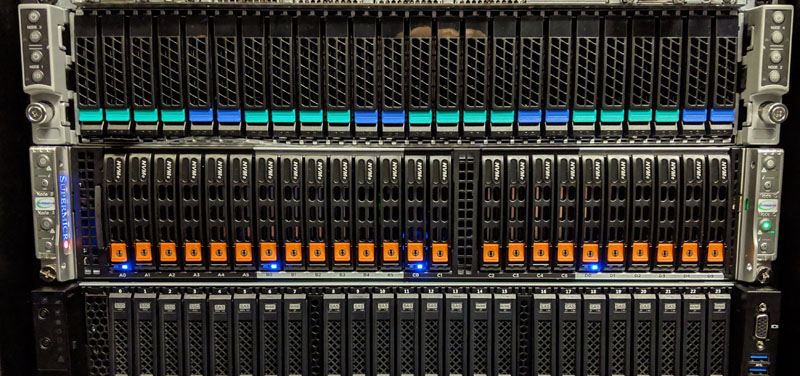
We wanted to highlight a few of the big differentiators of the server. First, there are a full set of twelve DIMMs per socket and twenty-four per node. This is a big deal. Many 2U4N designs only have eight DIMMs per socket or sixteen per node. The Supermicro BigTwin SYS-2029BZ-HNR gives the maximum DIMM capacity for a dual Intel Xeon Scalable platform. This means one is not losing memory capacity in the 2U4N form factor so no capacity trade-off is necessary. Here we also have four Intel Optane DCPMM 128GB DIMMs installed using one of the new 2nd Gen Intel Xeon Scalable platform’s new features.
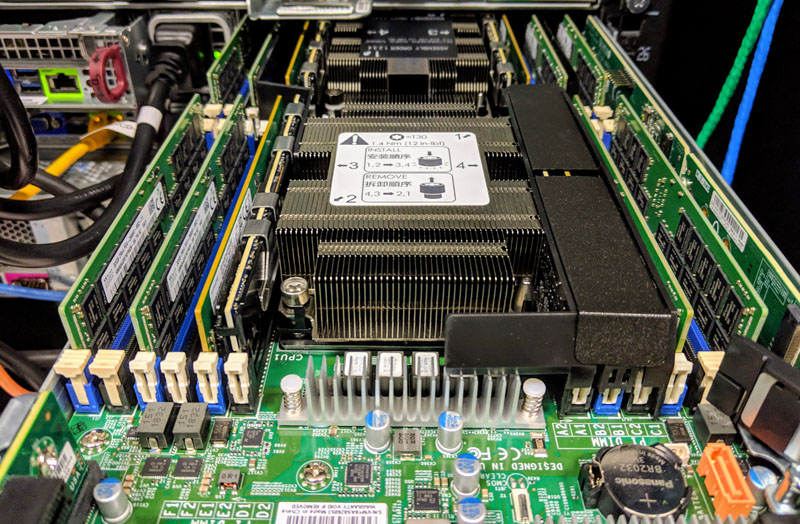
Another point of differentiation is with the CPU configuration. Socket-to-socket there are three Intel UPI links. Many dual CPU configurations use only two UPI links so the Supermicro BigTwin SYS-2029BZ-HNR has 50% more socket-to-socket bandwidth. That is the preferred configuration for high-performance configurations although it comes at a slightly higher cost to add the extra paths.
The Supermicro BigTwin SYS-2029BZ-HNR supports up to 205W CPUs which we used Intel Xeon Platinum 8280 top-bin SKUs in to verify they worked. More on that in our performance section. Supermicro has two different heatsinks and air baffles in the system to ensure proper airflow. There are two different heatsinks to help airflow but perhaps one small feature was particularly nice. The air baffles did not cover the heatsinks. When installing some vendor’s 2U4N solutions, the air baffles do not align just right over the heatsinks and catch on the chassis upon insertion.
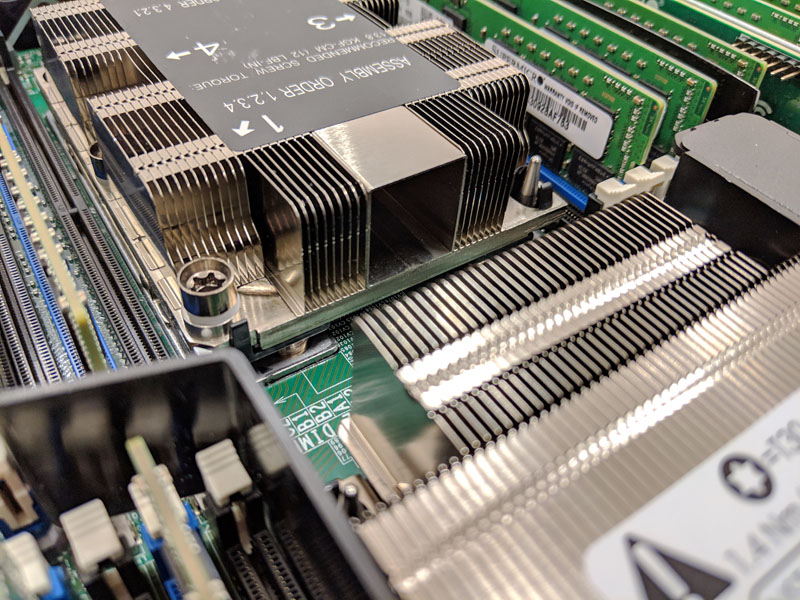
Airflow is different in the Supermicro BigTwin SYS-2029BZ-HNR than the Xeon E5 generation we reviewed previously. Each node has four counter-rotating fans in a N+1 redundant configuration. These fans are attached to the node instead of being shared chassis fans. That helps with airflow and serviceability, but it comes at the expense of slightly higher power consumption that we will show later in this review.
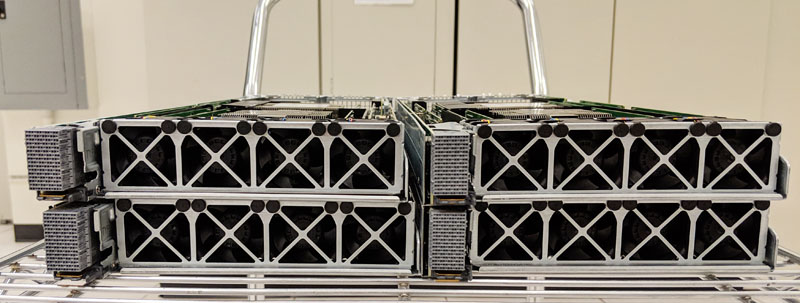
Without fans in the middle of the chassis, nodes are inserted and there is a single high-density connector that plugs into the chassis. One can see directly through to the storage PCB backplane with this configuration.
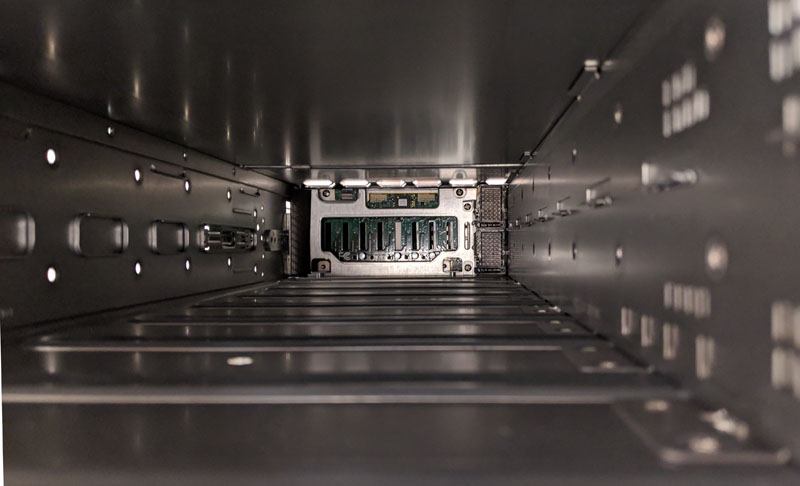
The rear I/O of each node comes with a management port, two USB 3.0 ports, and a VGA port standard. Beyond that, there are three add-on card areas that can be used for additional networking, storage, and accelerators.
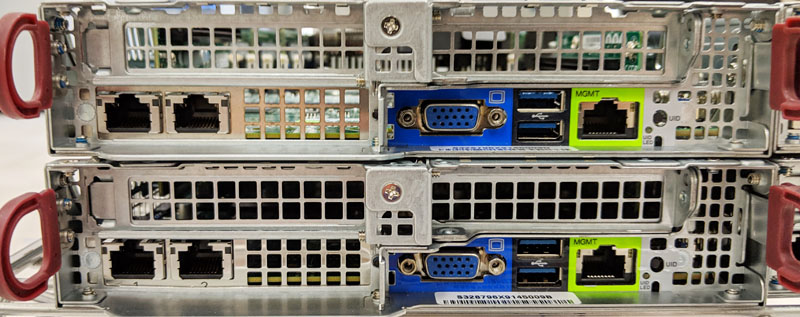
The bottom slot is a Supermicro IO Module (SIOM) slot where the company has a variety of options. We have dual 1GbE modules in these nodes, but they can just as easily be configured with the dual 25GbE SIOM option. Above the SIOM slot, there is a low profile PCIe 3.0 x16 slot. This is likely what one would use for an external SAS HBA, a PCIe host card for disaggregated NVMe storage, or 100GbE network adapters. You can also see a SD card slot which is becoming popular with some server vendors.
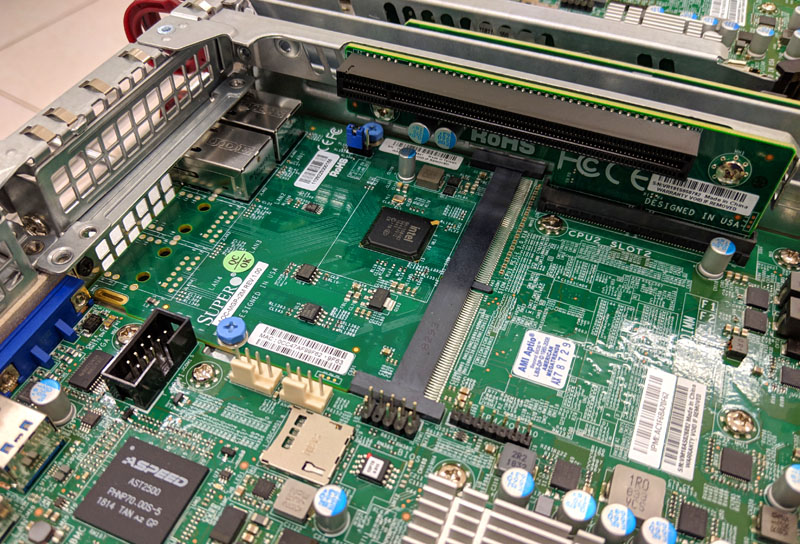
On the other side, there is another PCIe 3.0 x16 low profile slot. This can be configured with another PCIe device which brings the total to two PCIe 3.0 x16 slots and a SIOM slot.
Here one can also see a SATA DOM header for that boot option, but there is something else in this picture you may have missed. Just behind the PCIe x16 riser, one can see another PCB for a more modern boot option.
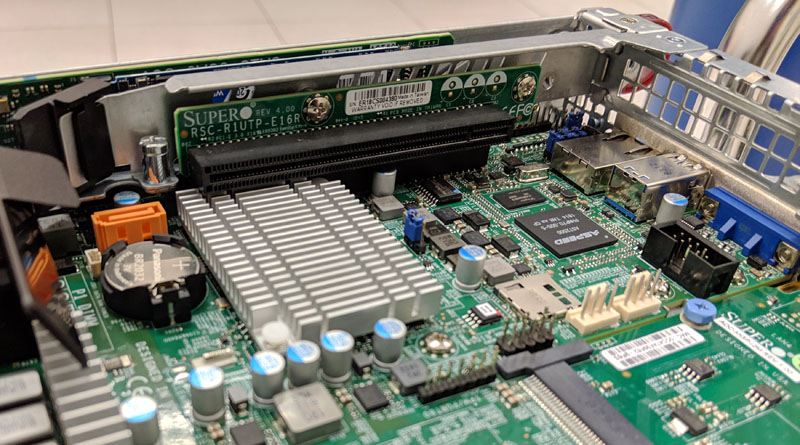
Supermicro has a dual M.2 SATA boot card. This uses a Marvell SATA controller to provide a single M.2 SATA or dual M.2 SATA boot devices in OS independent RAID 1 mirror configurations. The popularity of M.2 SSDs has made this the direction we are seeing major server vendors go for their boot devices.
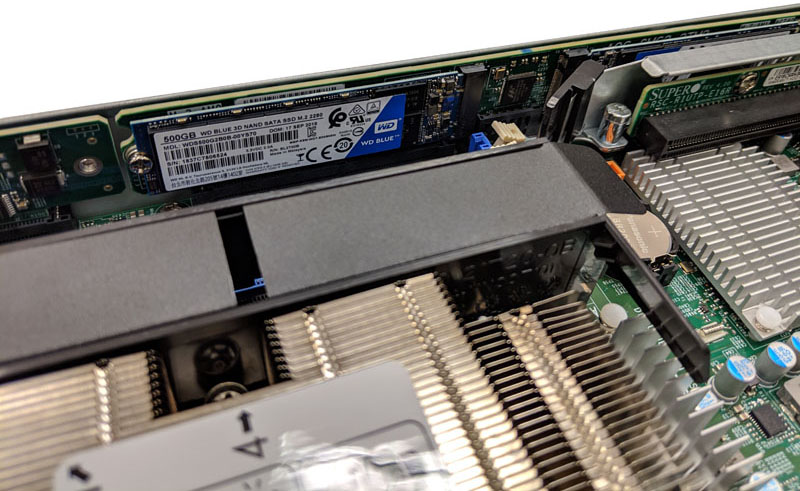
Here is a module pulled out of the node with two 500GB M.2 2280 (80mm) SSDs. Here we have two WD Blue drives which were not on the HCL when we had the system for review, but they worked perfectly and without issue.

Overall, this is a solid 2U4N design with the Supermicro BigTwin SYS-2029BZ-HNR. Supermicro has managed to fit even more functionality in this version. One gets the equivalent of four full 1U systems in a 2U chassis without sacrificing performance or memory capacity.
Next, we are going to take a look at the system topology before we move on to the management aspects. We will then test these servers to see how well they perform.

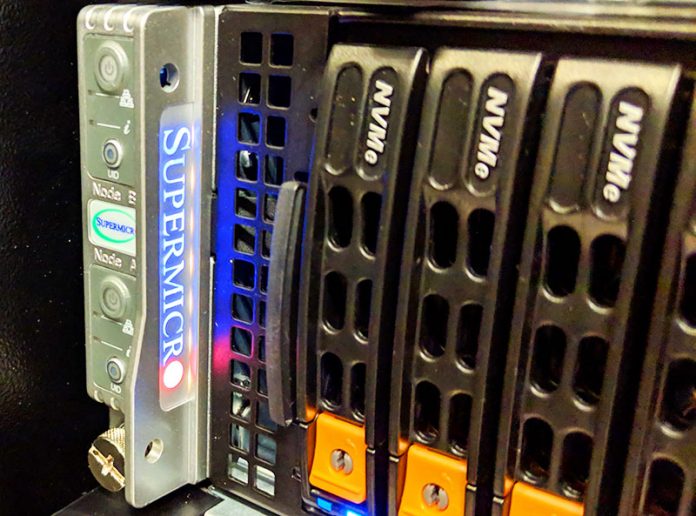



That is amazing what they can fit into a 2U. Especially considering dual sockets and 24 DIMMS per node. My 4U chassis with SM X11-DPI has two sockets and 16 DIMMS total (and only 12 of those 16 are usable if I want to have 6 channel). Quite amazing. But I’m homelab, so this is way out of my league. Cool though
This is amazing dual socket processor 4 node in 2U rack form factor server. Price very competitive with a giant brand.
My concern only at after sales support. Once they have it. They will be a leader for this region.